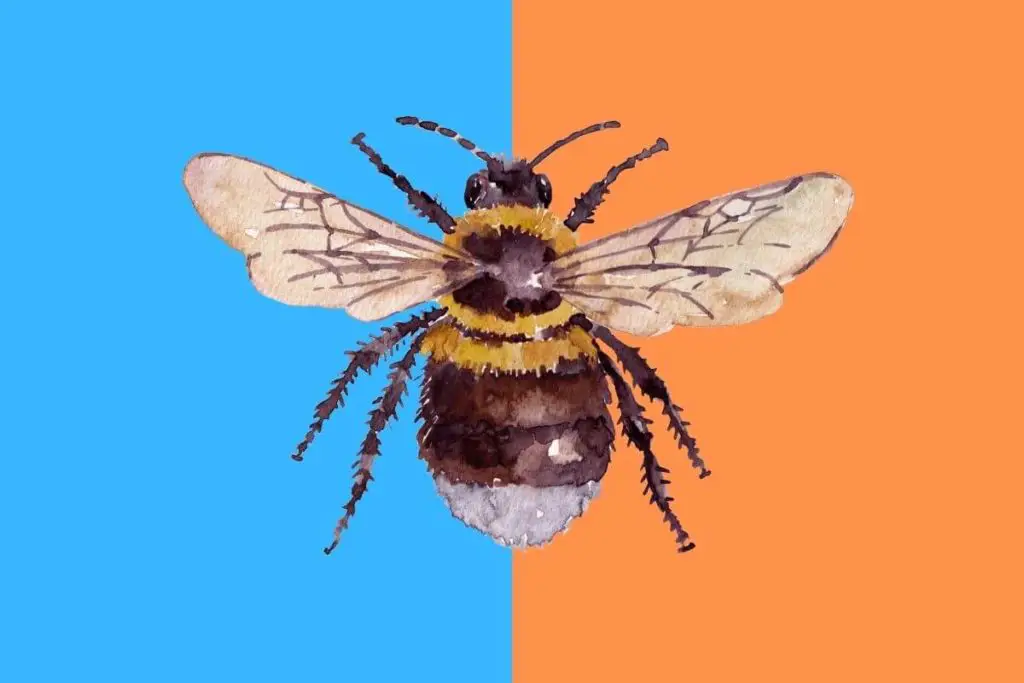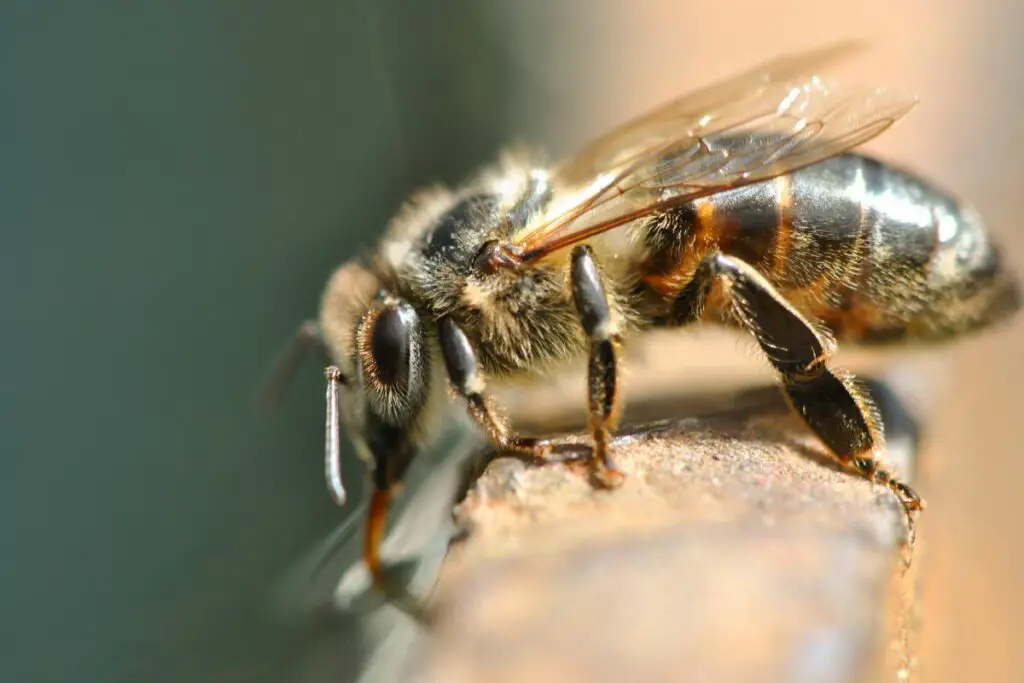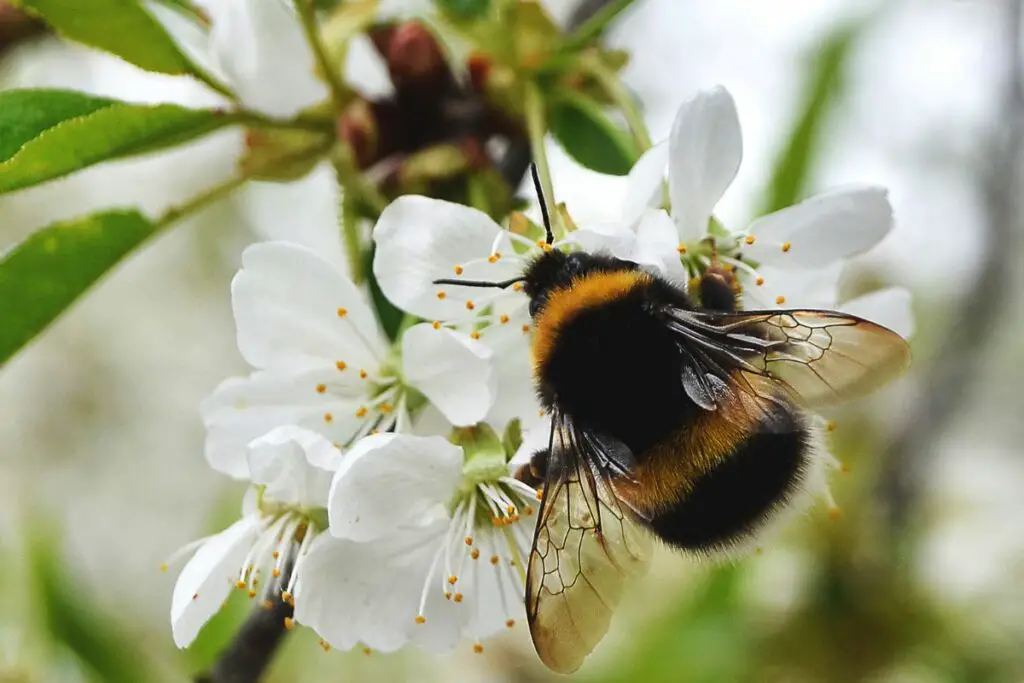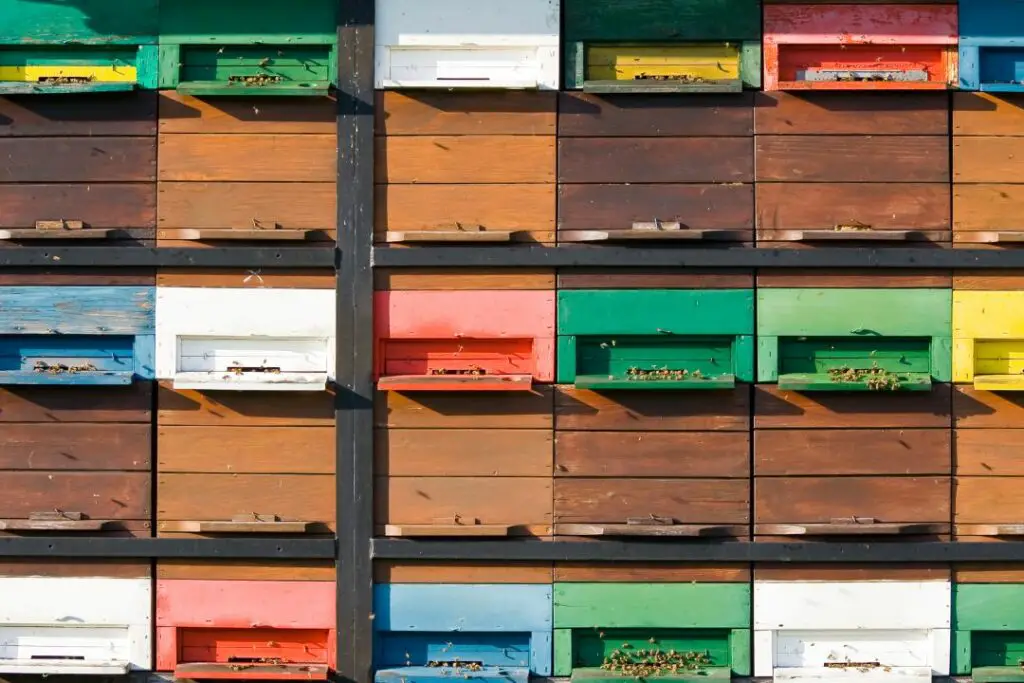Last updated on January 5th, 2024 at 03:01 pm
Nobody likes being caught out by rain, but for bees, a downpour is potentially life-threatening.
We’ve got the ultimate guide on how to help a wet bee back to life so let’s dive straight in.
Can Bees Drown In Water?
Bees are capable of short flights during a drizzle of rain, but a heavier rain shower is a definite problem. So it’s critical to know how to save a drowning or wet bee.
They can even fall into bodies of water when they’re drinking. Bees have very fine hairs covering their bodies which can quickly become waterlogged.
Their wings can get stuck to their bodies when they’re wet, making it impossible for them to continue flying.
If you’re wet bee has no wings this may be due to different causes and you should see our article on bees with no wings. Let’s take a look at how to save a wet bee.
How To Help A Wet Bee
Follow this guide to learn how to save a wet bee from drowning or dying of exposure.
The most important step is to first provide adequate shelter for the bee to rest and dry out.
Important tip – Do not attempt to pick up the bee with your hands as they may be frightened into stinging you and this will most likely kill them.
- Use a large leaf or a small glass to pick up the bee and carry it to a dry spot. Don’t move them far so ensure they don’t become disorientated.
- Locate a large plant, bush or an upturned plant pot for shelter that the bee can easily leave when it’s ready to fly again.
- If there’s no shelter or the rainstorm is hard and heavy, take the bee indoors to stay warm and speed up the drying of its hair.
- If you find the bee late in the evening you can keep it overnight in a well-ventilated box where it can dry off and rest in a warm, safe space. In the morning, you can release her back in the same spot you found her so she can return to the colony.
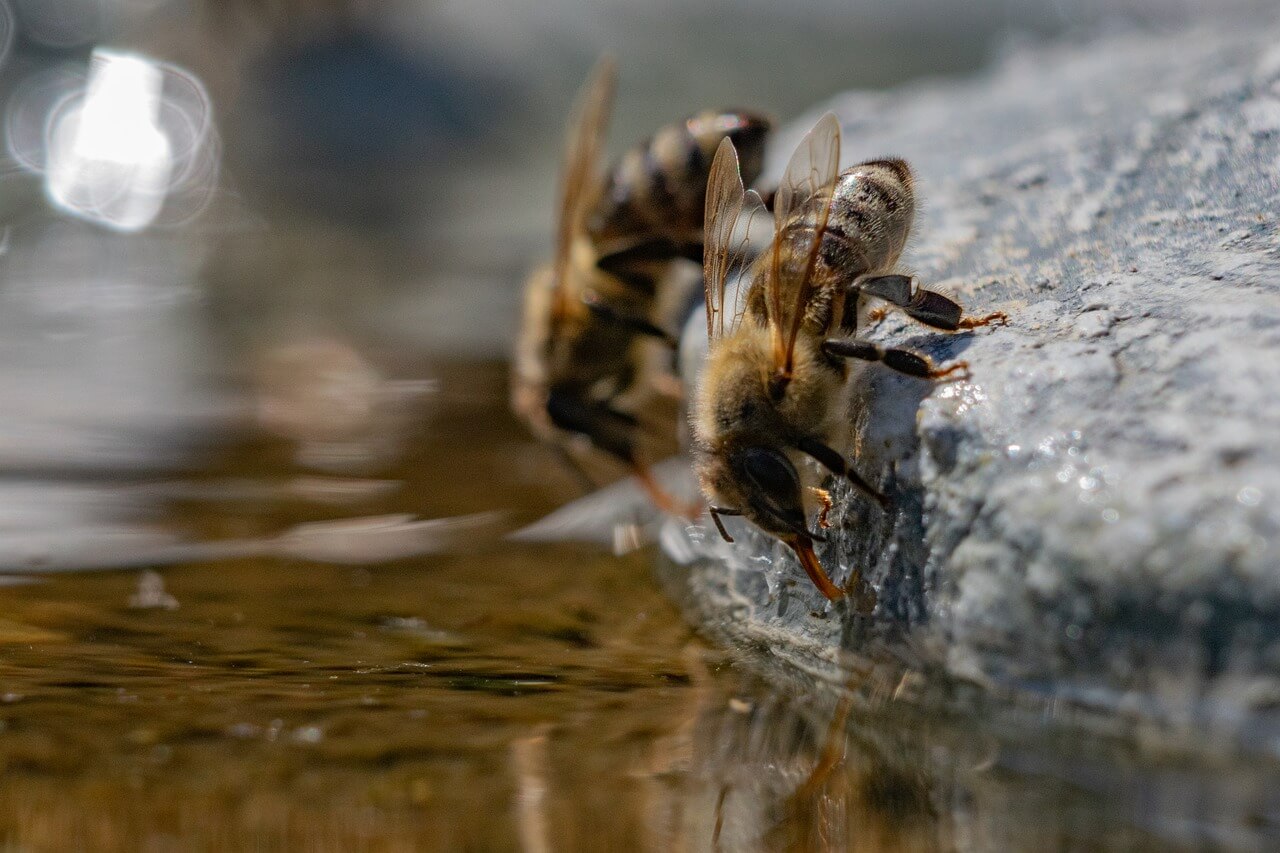
Energy
No doubt the poor bee will be tired from trying to fly with a waterlogged body and she may be in shock if the rain is heavy.
Bees are the same size as raindrops during a flash downpour or heavy storm and getting hit by one is the equivalent of a human being hit by a water cannon!
Your rescue bee will need a boost. The best way to provide a dehydrated bee with energy is a sugar-water mix.
This will give the bee a quick release of energy so she can fly back to her nest after drying out. Find out how to create your sugar-water solution and administer it to a tired, dehydrated bee.
Or make sure you’re always ready to help a bee with our handy bee revival keyring.
- 🐝🐝🐝 Wildlife Gifts To Help Bees & Pollinators - Your Bee Revival Keyring contains a special...
- 🎁🎁🎁 Bee Gifts For Women - Give the gift of giving with our bee accessories from Revive a...
- 🌱🌱🌱 Plantable Seed Paper Packaging/Seed Gifts - What makes the perfect eco gift? We think...
- 🌍🌎🌏 Planet Friendly Gadget Keyring - A great gift for a friend or loved one who cares about...
- 🐾🐾🐾 Supports Rewilding Britain - A percentage of every sale will be donated to Rewilding...
Leave Her
Once you have found a warm, dry spot for her and provided a little sugar-water mix, leave her to dry out in peace.
If the rain is sudden or heavy, she will need some time to clean herself and separate her wings.
Do not try to separate her wings yourself as you can cause further damage or even pull a wing off.
Bees are perfectly capable of grooming themselves and they will be fit to fly in no time.
If you need to keep the bee sheltered due to an ongoing storm, ensure that the shelter you have is ventilated and warm.
They are susceptible to temperature swings and they need oxygen just like we do.
Place the container in the same spot you first spotted the bee as she will be able to determine the direction of her colony from that location.
All complete? Hey presto, your simple guide to saving a drowning bee anywhere, anytime!
Learn about other ways you can help to revive bees!
What happens if a bee gets wet?
When a bee gets wet, its wings become heavy, making it difficult for it to fly, and it may struggle to return to its hive.
Where do bees go when it rains?
Bees seek shelter when it rains, often taking cover under leaves and flowers, or even returning to their hive to stay dry until the rain stops.

